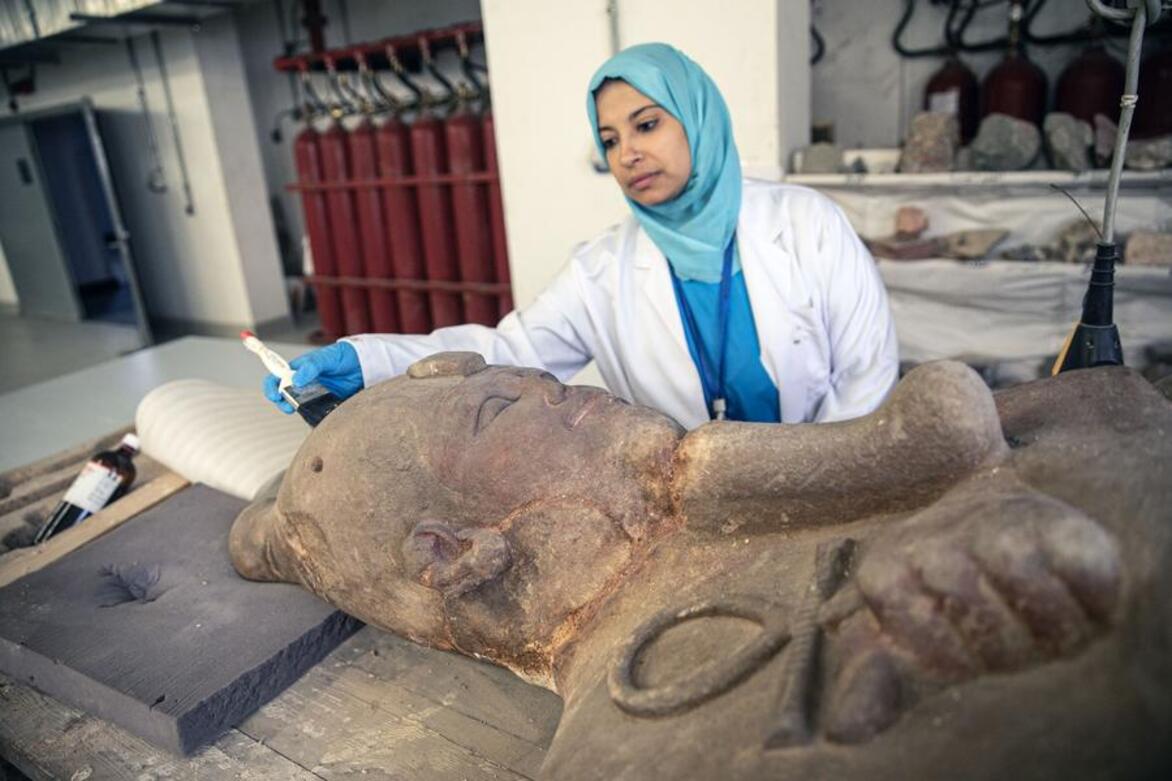Guardians of time: conservators breathing life into Egypt's millennia-old treasures
Xinhua
13 Sep 2025

by Mahmoud Fouly
CAIRO, Sept. 13 (Xinhua) -- While visitors wander the sunlit halls above, marveling at treasures carved millennia ago, a quieter, more meticulous drama unfolds beneath their feet, in the shadowed depths of the National Museum of Egyptian Civilization (NMEC).
Here, in the basement, conservators clad in perfect-clean white coats labour with patient dedication, breathing new life into relics that have withstood the relentless march of time.
In the NMEC's Stone Conservation Lab, they tackle statues weighing over 120 kilograms, employing an overhead winch to lift and reassemble colossal fragments.
"This is the only lab in Egypt equipped with a winch for joining such heavy pieces," explains Khaloud Khairy, acting head of the lab, as she gestures toward a monumental statue, once shattered into six parts, now slowly restored.
"Restoration is a step-by-step process. Often, pieces are missing, but with today's advanced software, we can visualize absent sections and reconstruct them with remarkable precision."
Nearby, researcher Ahmed Ali demonstrates the digital side of this delicate craft. Before a single fragment is touched, it is meticulously documented in both 2D and 3D.
"In 2D, we map every crack and missing element. In 3D, we can rotate the object, examine it from every angle, and explore how missing parts might fit," he says.
The Stone Conservation Lab is but one facet of the NMEC Conservation Center, a facility regarded as one of the most advanced in the region.
It encompasses a receiving unit, functioning as a quarantine zone for incoming antiquities; a mummies' lab, complete with nitrogen nurseries and climate-control devices; and dedicated units for the restoration of icons, oil paintings, organic artifacts such as wood, textiles, and manuscripts, as well as inorganic objects including pottery, glass, metals, and small stone monuments.
State-of-the-art equipment, from one of the world's largest anoxia sterilization devices to a carbon-14 dating machine, makes the center a hub for researchers from across Egypt.
"Our work doesn't end at restoration," says Mohamed Abd El-Shafy, general manager of the NMEC Conservation Center. "We monitor the condition of artifacts from the moment they leave their original sites until they are placed in storage or on display."
Elsewhere in the center, Mostafa Ismail, head of the Mummies Conservation Lab, delicately examines the skull of a mummy dating back some 5,000 years to the New Kingdom, its provenance unclear.
One of the greatest threats, he explains, comes from salt deposits that have stripped away the protective resin layers once enveloping the body. "Salt absorbs humidity and forms an alkaline solution, which attacks the resins and accelerates decay," he says. With painstaking care, his team separates the salt crust from the fragile remnants of resin, preserving what remains of the ancient tissue beneath.
Across the center, specialized labs merge modern technology with time-honored conservation techniques to safeguard the full spectrum of Egypt's heritage-from wooden artifacts, textiles, and manuscripts to pottery, glass, metals, oil paintings, and icons. Beyond preservation, the center nurtures the next generation, offering weekly workshops, hands-on experience, scientific forums, and collaborations with universities and institutes.
As Abd El-Shafy reflects, the center's mission stretches far beyond the present: "Our responsibility is to ensure that these artifacts, carriers of Egypt's vast memory, endure not only for today's visitors but for countless generations yet to come."
